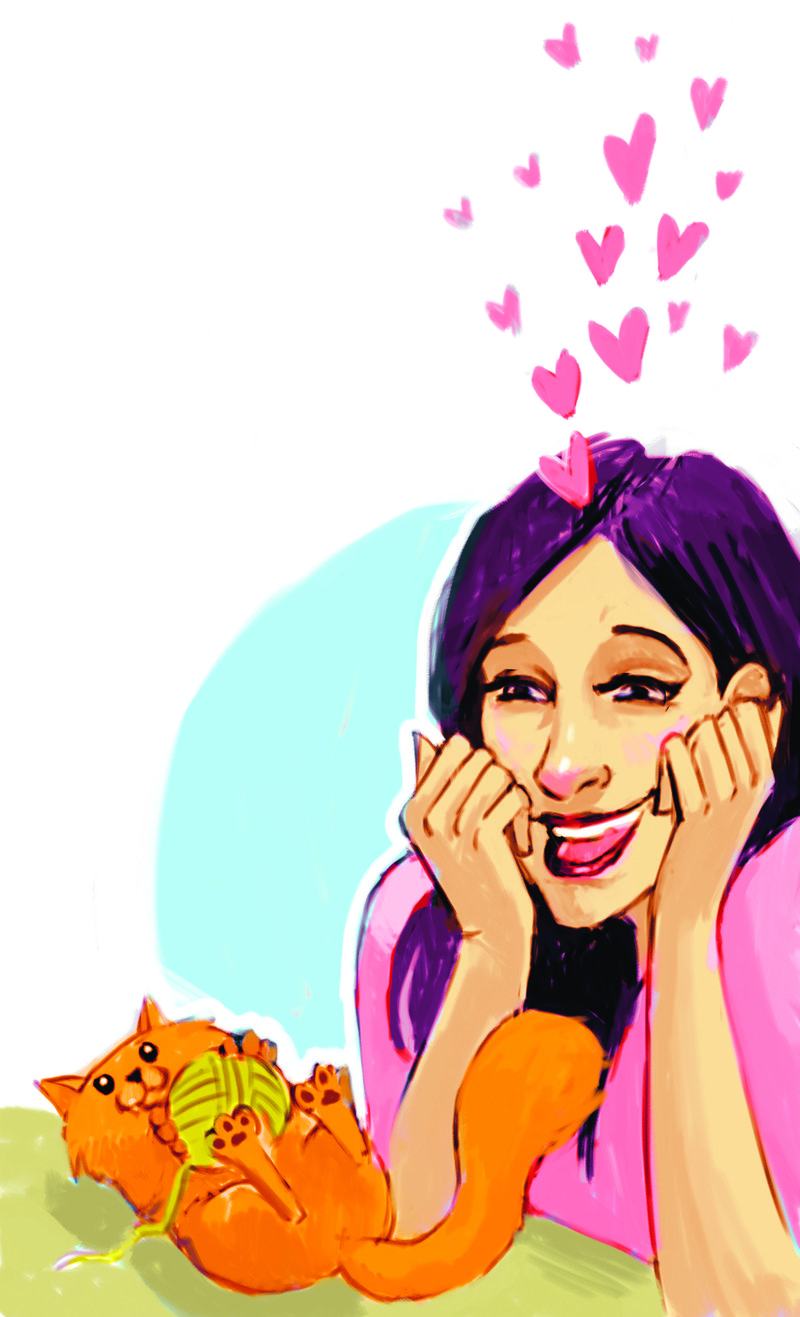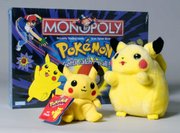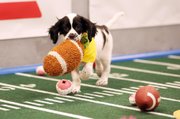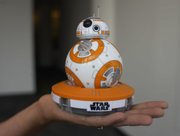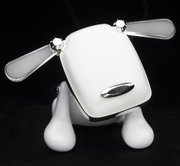It has a chubby little body, a big head and floppy little limbs. It has high, babylike voice, a button nose and a little mouth. It has big bright eyes and rosy cheeks. It giggles and squeals.
But unlike a human baby, it is bright yellow and makes a springing noise when it hops.
Of all the "pocket monsters" that people can hunt in Pokemon Go, the popular mobile game that has swept the world, the most familiar is Pikachu, the yellow "rodent Pokemon" that is the franchise's mascot. Pikachu's popularity is no accident. With its squishy body and squeals of joy, Pikachu is designed to be super cute -- and, as a result, it might trigger deeper, biological forces that grab people's attention and generate affection.
Are people today spending more time looking at cute things than ever before? The internet puts at our fingertips a virtual zoo of baby sloths, cuddling otters and hamsters in top hats. We watch the minions bumble about on the big screen, buy Hello Kitty merchandise or watch a Pikachu convention dance on YouTube.com.
The appeal of these characters may seem trivial, but it highlights an evolutionary force -- one that can trigger billions of dollars a year of consumer spending. Cuteness is an especially powerful force in the digital world because it is something that can be consumed in quick, small doses, in a gif or picture. And it has blossomed in consumerist culture because it is incredibly good at selling things.
BABYLIKE THINGS
According to a body of academic research -- yes, there are dozens of researchers who study "cuteness" -- the science of cuteness begins with babies. Babies have large eyes and heads, button noses, soft, chubby bodies, floppy little limbs and a teetering gait. Those properties are echoed in Pikachu, puppies and even the Volkswagen Beetle.
The first person to enumerate these characteristics was Konrad Lorenz, a Nobel-winning Austrian zoologist who is often thought of as the father of cuteness research. (Lorenz advocated eugenics as a member of the Nazi Party but years later decried his earlier actions.)
Lorenz's early work studied the process by which baby animals and their caregivers bonded after a birth. He observed a set of characteristics, in human and animal babies, that he termed "kind-
chenschema" and believed triggered care-taking behavior in a parent. He diagrammed these attributes -- large eyes, bulbous foreheads and small chins.
Today, some researchers think these traits are evolutionary signals to parents that a baby is healthy and worth caring for, says Jeffrey Kurland, a retired professor of biological anthropology at Pennsylvania State University. But others think these traits are random.
"Human infants could have had pinhole eyes, a really bulbous chin, a low brow, ears that stick out," Kurland says. "Why aren't those sort of things cute? There's nothing intrinsic, built into those properties that elicits cuteness. It's something that we've imbued them with."
There are other explanations for why babies don't have pinhole eyes and tiny heads, of course. Babies have large heads and eyes because humans have large brains and eyeballs that don't grow much over their lives. Babies have small noses and chins because cartilage takes time to develop.
Regardless of why babies are cute, their features trigger a strong effect. Studies have shown that pictures of cute babies cause the release of dopamine, the same chemical that is released when people fall in love, have sex or take drugs. Other research has shown that cuter babies get better care from their parents, and that cute kids are more likely to be engaged in friendships and play.
In one 2009 study (available at bit.ly/2cdI1E6), researchers manipulated pictures of babies to give them less pronounced baby features or more pronounced baby features. People who viewed the photographs rated the babies with the more infantile faces as cuter, and said they felt a stronger drive to take care of them.
Cuteness may also make people focus more. Hiroshima University researchers found people who had looked at pictures baby animals subsequently did better in tasks that required concentration. They said their findings suggested human brains are programmed to zap to attention when a cute thing appears.
Cuteness is also a way to elicit positive emotions in unexpected contexts. Robotic cats are being used to keep elderly people company in nursing homes.
But others argue that watching animal videos and the like has become a way for people to cope with the drudgery of white-collar work. "We are suffering from the effects of late capitalism, including loneliness and isolation, and then cuteness is offered as this salve or reward," says Allison Page, a visiting professor at Hampshire College.
CUTER FISH?
Feelings of affection spill over to cute animals, cartoon characters and even inanimate objects -- sometimes in weird and inappropriate ways.
Humans have bred dogs, cats, rabbits and even fish to be cuter over generations. Just picture the watery eyes and impractically short snout of pugs, some of the most beloved dogs on the internet. It has been documented that pandas and other animals considered cute tend to get more conservation funds than less cute animals.
Then there are the animals that seem to have been hit by "the ugly stick of evolution": moles, snakes, birds and fish.
In a famous essay, evolutionary biologist Stephen Jay Gould discusses why people dislike camels. Camels lift their nose, draw the corners of their mouths down, half close their eyes and blow out through their nose -- "the 'harrumph' of the stereotyped upper-class Englishman or his well-trained servant," Gould writes.
Perhaps no one has better tapped into these ideas and prejudices than Disney. In animating dozens of animal heroes and villains over the decades, Disney has made full use of our love of babylike features, and disdain of the opposite.
As Mickey Mouse gained in popularity over the decades, Gould writes, his head and eyes became much larger, and his snout thickened to give him a snub-nose. His arms and legs thickened, and his clothes became longer to give him shorter-looking legs.
Meanwhile, the villains Mickey faced off against were drawn with more adult appearances. Gould notes that Mortimer Mouse, a sports car-driving mouse that challenged Mickey for Minnie's love in a 1936 short, has a much smaller head and longer snout for his body and head size than Mickey.
Disney was far from the only company trying to make money off cuteness. Researchers say the rise of cuteness is closely tied with industrialization, advertising and the rise of consumerism in the late 1800s and onward.
By the 1910s, for example, Kewpie dolls -- nude Cupid dolls with massive heads and eyes -- were used to advertise Jell-O. The Morton Salt Girl appeared in Good Housekeeping in 1911, and the Gerber baby appeared in 1928. The Coppertone Girl, Poppin' Fresh (the Pillsbury Doughboy) and the Snuggle Bear came after World War II, with the arrival of television.
Over the years, Betty Boop, Snoopy, Precious Moments, the Minions and Hello Kitty have launched commercial empires of cartoons, video games, movies, figurines, T-shirts and lunchboxes. And companies have extended the power of "cuteness" in less predictable ways -- selling smaller-size versions of their products, typically for a higher price per pound. Think of miniature M&Ms, cupcakes and iPod minis.
Others have incorporated cute characteristics by giving products rounder, softer edges and large "eyes." In a 2011 study, researchers found that consumers saw the fronts of cars as similar to human faces, with the headlights representing the eyes. Cars with big, round headlights elicited more positive responses.
The Volkswagen New Beetle, introduced in 1997, was particularly cute, with its round shapes, huge headlights and dashboard flower vase. GQ magazine called it "concentrated cutesiness -- the drivable equivalent of a YouTube video where a puppy hugs a kitten while a baby panda looks on knowingly."
The car sold particularly well among women -- according to VW, women accounted for nearly 70 percent of the car's buyers. But it appeared to gain perhaps too strong of a reputation for cuteness, ending up with few male buyers.
By 2011, the company had redesigned the Beetle to be more streamlined, more angular and "more masculine," as Volkswagen's head of design said. It also removed the flower vase.
ActiveStyle on 09/12/2016
